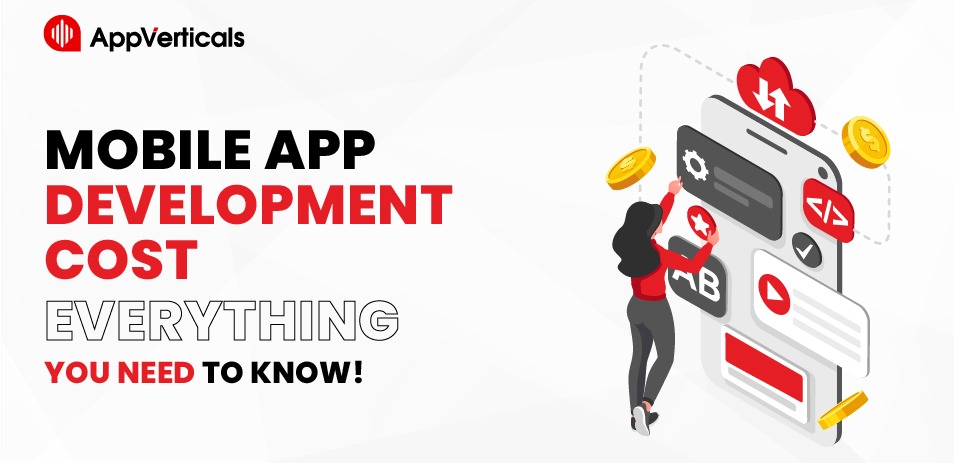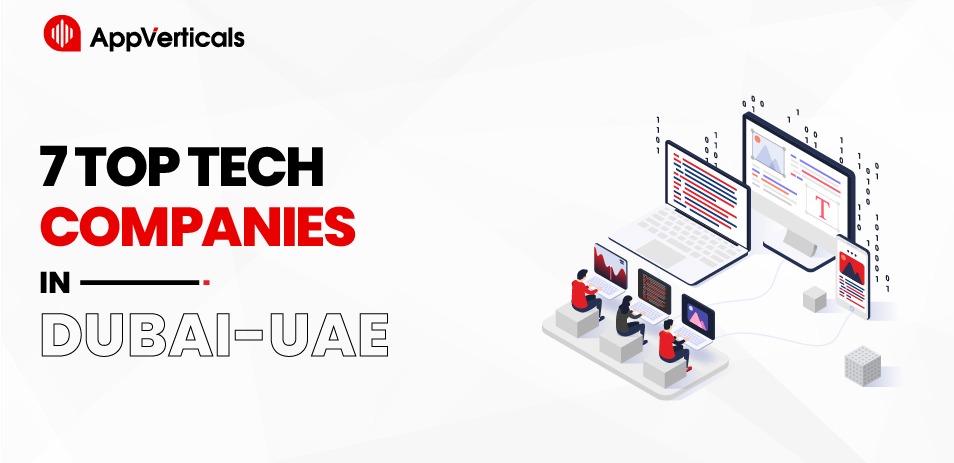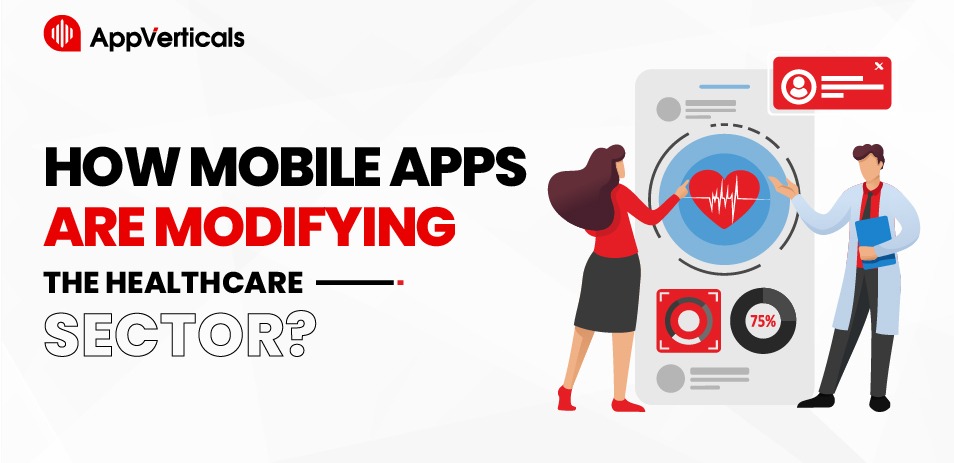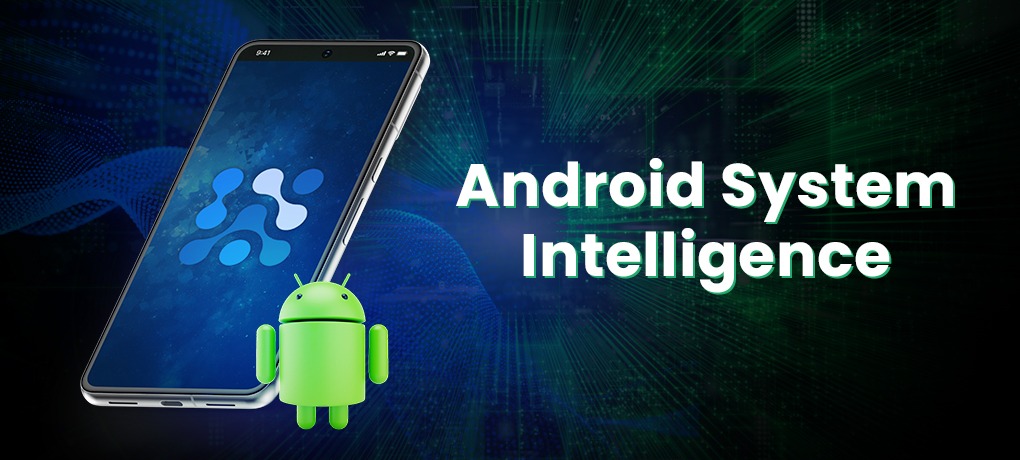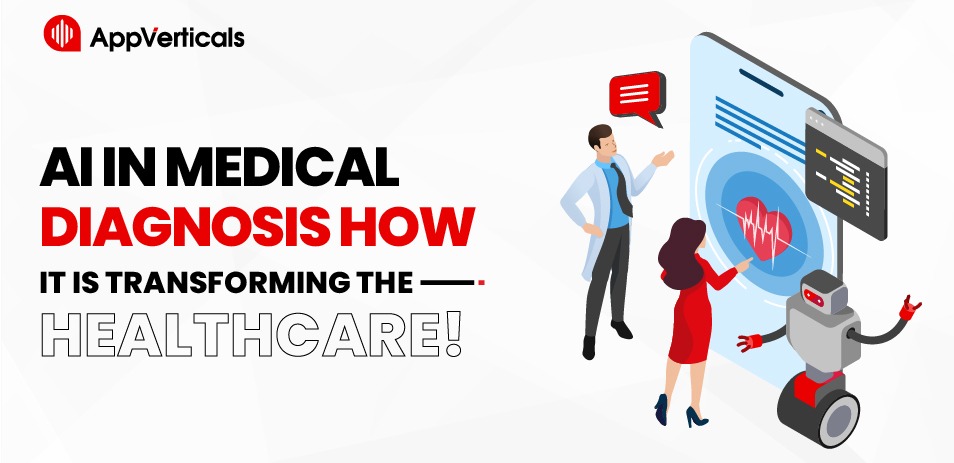Mobile apps have become an integral part of our lives. With over 7 billion smartphone mobile network subscriptions globally, it’s no surprise that the mobile app market is booming.
So, whether you’re a budding entrepreneur or a seasoned business owner, understanding the costs involved in app development is crucial for making informed decisions. In fact, research indicates that the average American checks their phone 144 times every day, or once every 10 minutes.
This comprehensive guide will help you clearly understand the key elements that influence app development costs. Armed with this knowledge, you can make informed decisions and ensure a successful mobile app development in Dubai, US, UK, and other regions of the world.
Let’s discuss it in detail!
Why Is Knowing Mobile App Development Cost Crucial?
The Application Development Software industry is anticipated to generate US$250.70 billion in revenue by 2029.
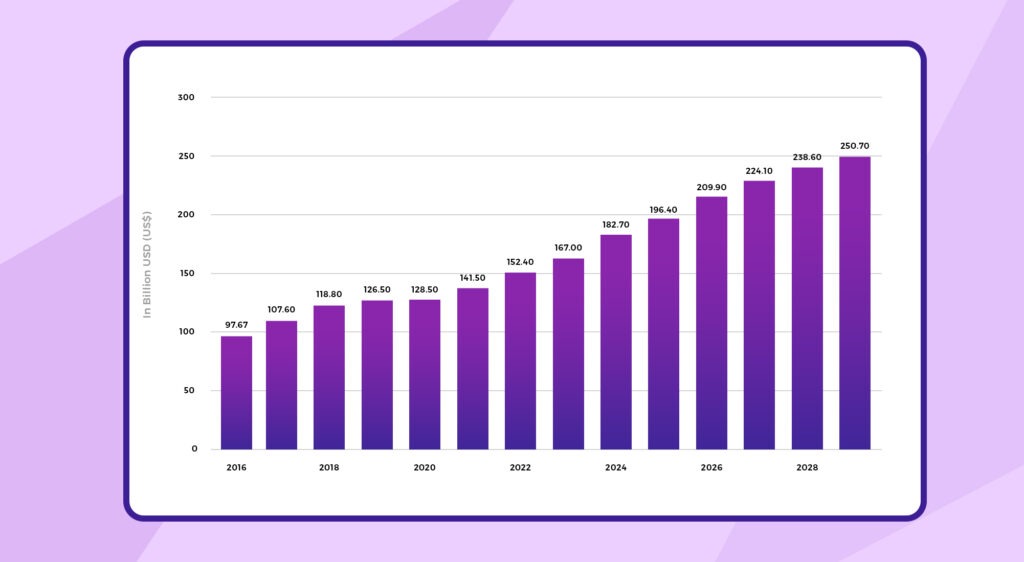
Understanding app development costs is essential for successful project planning. A detailed budget provides clarity, ensures resource allocation, and helps set realistic expectations for stakeholders.
Here’s why knowing the cost upfront is crucial:
- Strategic Planning: A clear understanding of costs allows you to allocate resources effectively, prioritize features, and make informed decisions throughout the development process.
- Setting Expectations: Knowing the potential costs can help you manage expectations with stakeholders, ensuring alignment and avoiding misunderstandings.
- Budget Allocation: A well-defined budget helps you allocate funds efficiently, preventing unexpected expenses and ensuring project sustainability.
- Risk Mitigation: Understanding the potential costs can help you identify and mitigate risks associated with development, such as cost overruns or scope creep.
- Investment Decisions: Knowing the expected costs allows you to assess the potential return on investment (ROI) and make informed decisions about whether to proceed with the project.
With a clear understanding of app development costs, you can make strategic decisions, manage expectations, and increase your chances of project success.
9 Most Popular Apps – How Much Does it Cost To Make an App Like Them!
Facebook and Instagram had the most mobile app downloads worldwide, with 59 million and 58 million, respectively. Before moving towards the mobile app development process, let’s have a look at how much does it cost to make an app like Uber, Snapchat, and more.
1. Snapchat-Like App
Snapchat’s success can be attributed to its innovative features like disappearing messages, AR filters, and Stories. Developing a similar app would require the following:
- Implementing features for capturing, editing, and sharing media.
- Building a messaging system with features like group chats and voice/video calls.
- Integrating augmented reality technology for interactive filters and effects.
- Scaling to handle a large user base and real-time interactions.
Estimated cost to build a Snapchat-like app: $50,000 – $150,000+
2. Developing an App Like TikTok
TikTok’s popularity stems from its short-form video format, recommendation algorithm, and social features. Developing a similar app would involve:
- Implementing tools for creating and editing short-form videos.
- Developing a sophisticated algorithm to personalize content recommendations.
- Integrating features like likes, comments, sharing, and following.
- Implementing live video streaming capabilities.
Estimated cost of developing an app like TikTok: $100,000 – $300,000+
3. Cost to Build a Messaging App Like WhatsApp
WhatsApp’s success is attributed to its reliability, cross-platform compatibility, and end-to-end encryption. Developing a similar app would require the following:
- Building a messaging system with features like group chats, voice/video calls, and file sharing.
- Implementing strong encryption to protect user privacy.
- Ensuring the app works seamlessly on iOS, Android, and other platforms.
- Scaling to handle a large user base and real-time communication.
Estimated cost to build a messaging app like WhatsApp: $50,000 – $150,000+
4. Cost of Developing an App Like Uber
Uber’s success is attributed to its innovative ride-hailing platform, user-friendly interface, and efficient operations. Developing a similar app would involve:
- Integrating GPS and mapping APIs for real-time location tracking.
- Developing an algorithm to match riders with nearby drivers.
- Integrating secure payment gateways.
- Building separate apps for drivers and riders.
Estimated cost of developing an app like Uber: $100,000 – $300,000+
5. How Much Does Video Streaming App Like Disney+ Costs?
Disney+’s success is attributed to its vast library of content, user-friendly interface, and seamless streaming experience. Developing a similar app would require the following:
- Building a platform to manage and organize a large library of content.
- Integrating a reliable streaming platform.
- Designing a visually appealing and intuitive interface.
- Implementing DRM to protect copyrighted content.
Estimated App Development Cost: $200,000 – $500,000+
6. Coursera-Like Mobile App Development Cost
Coursera’s success is attributed to its extensive course library, interactive learning features, and certification programs. Developing a similar app would involve:
- Building a platform to host and deliver online courses.
- Managing course materials, quizzes, and assignments.
- Implementing features like discussion forums, live sessions, and gamification.
- Integrating mechanisms for issuing certificates and credentials.
Estimated Coursera-like mobile app development cost: $150,000 – $400,000+
7. Development Cost for an App Like Holafly
eSIM apps like Holafly offer convenient international connectivity. Developing such an app involves integrating with mobile carriers, managing virtual SIM profiles, and providing a user-friendly interface. The cost can vary depending on the features and complexity. Developing a similar app would involve:
- Integration with mobile carriers
- Management of virtual SIM profiles
- User-friendly interface for purchasing and activating eSIMs
- Integration with payment gateways
- Real-time data usage tracking
Estimated development cost for an eSIM app like Holafly: $50,000 – $100,000.
8. How Much Does It Cost to Develop a Web App Like Hukoomi?
Hukoomi is a government services platform. Developing a similar app requires integrating with government systems, providing secure access to services, and ensuring compliance with regulations. The cost can be significant due to the complexity and integration requirements. Developing a similar app would involve:
- Integration with government systems and databases
- Secure access to government services
- User-friendly interface for citizens
- Compliance with government regulations
- Data security and privacy measures
Estimated App Development Cost: $200,000 – $500,000.
9. Building Platforms Like Amazon, Facebook, and Instagram
Developing platforms like Amazon, Facebook, and Instagram involves complex features, scalability, and user engagement. These social apps require robust infrastructure, advanced algorithms, and continuous updates. Developing a similar app would involve:
- Product catalog management
- Shopping cart functionality
- Payment gateways integration
- User profiles and social features
- Recommendation algorithms
- Live streaming capabilities
- Push notifications
- Integration with third-party services (e.g., shipping, logistics)
- Scalability to handle large user bases and high-traffic
Development of social media app cost: $500,000+
| Popular Apps | Estimated Cost to Make an App Like Them |
|---|---|
| Snapchat | $50,000 – $150,000+ |
| TikTok | $100,000 – $300,000+ |
| $50,000 – $150,000+ | |
| Uber | $100,000 – $300,000+ |
| Disney+ | $200,000 – $500,000+ |
| Coursera | $150,000 – $400,000+ |
| Holafly | $50,000 – $100,000 |
| Hukoomi | $200,000 – $500,000 |
| Amazon, Facebook, and Instagram | $500,000+ |
These are estimated mobile app development costs and can vary significantly based on specific requirements, features, and the development team’s expertise. It’s essential to consult with a professional mobile app development company for an accurate cost estimate tailored to your project.
7 Key Factors Affecting App Development Costs
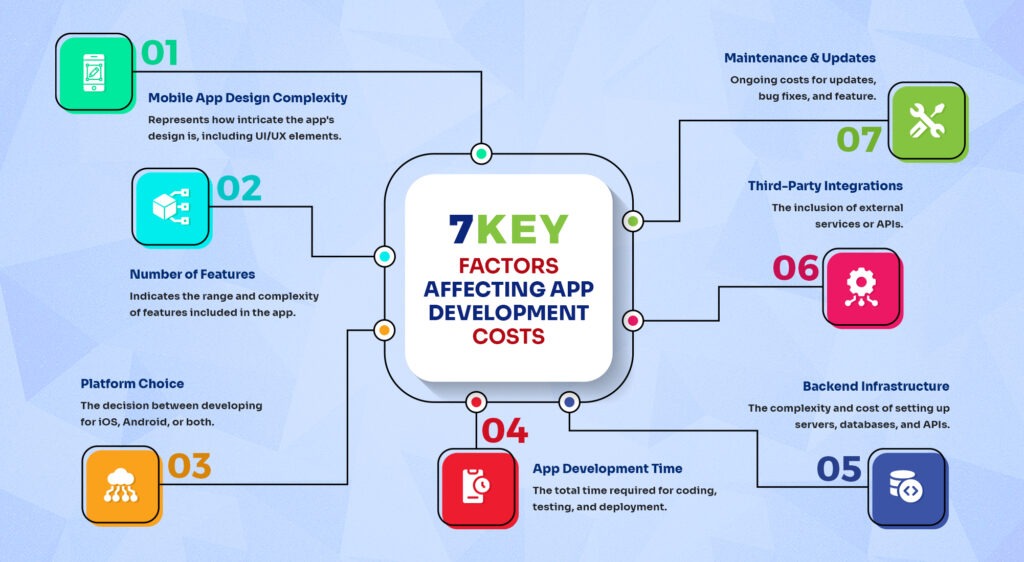
1. Mobile App Design Complexity
The design of your mobile app plays a crucial role in its overall cost. A complex design with intricate animations, custom illustrations, and unique user interfaces can significantly increase development time and costs. On the other hand, a simpler design with a focus on functionality can help reduce expenses.
Examples of how design complexity can affect the budget:
- Custom animations and transitions: Creating custom animations and transitions can be time-consuming and require specialized skills. For instance, if your app involves complex animations or interactive elements that require custom coding, it can significantly increase the development time and cost.
- Complex user interfaces: Apps with intricate layouts, multiple screens, and interactive elements can increase development effort. A design with many layers, nested elements, or dynamic content can require more time and resources to implement.
- High-quality graphics and illustrations: Custom-designed graphics and illustrations can add to the overall cost. If you need high-resolution images, unique artwork, or custom icons, it may require additional resources from designers or external vendors.
Here is the impact of cost breakdown based on app design:
| Design Complexity Level | Estimated Cost Increase |
|---|---|
| Basic design with minimal customization | 10-20% |
| Moderate design with some customization | 20-30% |
| Complex design with intricate animations, custom illustrations, and unique UI elements | 30-50% |
2. Number of Features:
The number and complexity of features in your app directly impact the development cost. More features mean more development time, testing, and maintenance. It’s essential to prioritize features based on your target audience and business goals.
Examples of how features can affect the budget:
- Real-time features: Real-time updates, notifications, and chat functionality can increase development complexity. For example, implementing real-time messaging or location tracking requires specialized technologies and additional development effort.
- Social media integration: Integrating with social media platforms can require additional development time and API costs. Integrating with multiple social media platforms or implementing advanced features like user login and sharing can further increase costs.
- Payment processing: Implementing secure payment gateways can add to development costs. The choice of payment gateway, integration complexity, and adherence to security standards can affect the overall budget.
- Location-based services: Using GPS and mapping APIs can increase complexity and costs. Incorporating location-based features like geo-fencing, route optimization, or real-time tracking can require additional development time and API usage.
| Number of Features | Estimated Cost Increase |
|---|---|
| 10-20 basic features | 10-20% |
| 20-30 moderate features | 20-30% |
| Platform Choice for App Development | 30-50% |
3. Platform Choice:
How much it costs to develop an iOS application? Does making an android app impacts more on cost? These questions will come in mind when choosing the platform for app development. Developing for both iOS and Android platforms can increase costs due to the need for separate codebases and testing. However, targeting a single platform can limit your potential reach.
Examples of how platform choice can affect the budget:
- Cross-platform development: Using frameworks like React Native or Flutter can reduce development time and costs for both iOS and Android. However, native app development may offer better performance and access to platform-specific features.
- Platform-specific features: If your app requires features that are unique to one platform (e.g., Apple Pay, Android Pay), you may need to develop separate code for each platform, increasing costs.
- Testing and maintenance: Testing and maintaining separate apps for iOS and Android can also add to the overall budget.
| Platform Choice for App Development | Platform Choice for App Development |
|---|---|
| Developing for both iOS and Android | 20% |
| Targeting a single platform (iOS or Android) | 10% |
| Cross-platform development (using frameworks like React Native or Flutter) | 15% |
4. App Development Time:
The time it takes to develop your app is a significant factor in determining the overall cost. Factors influencing development time include:
- Complexity of features: The more complex your app’s features, the longer it will take to develop. For example, apps with real-time features, intricate user interfaces, or integrations with multiple platforms will require more time.
- Team size and experience: A larger and more experienced development team can often accelerate the development process. However, hiring a larger team can also increase costs.
- Development methodology: The chosen development methodology (e.g., Agile, Waterfall) can impact the timeline. Agile methodologies, which focus on iterative development and flexibility, can often reduce time-to-market.
- Scope changes and revisions: Any changes to the project scope or requirements during development can lead to delays and increased costs.
Examples of how app development time can affect the budget:
- Delayed launches: Delays in development can lead to missed opportunities and increased costs due to lost revenue or market share.
- Scope creep: Adding new features or changing requirements during development can extend the project timeline and increase costs.
- Inefficient development practices: Using outdated tools or methodologies can slow down development and increase costs.
- Communication challenges: Poor communication between the development team and stakeholders can lead to misunderstandings and delays.
| Mobile App Development Factor | Average Percentage Impact |
|---|---|
| Complexity of features | 30% |
| Team size and experience | 20% |
| Development methodology | 15% |
| Scope changes and revisions | 10% |
By effectively managing development time, you can reduce costs and ensure that your app is launched on schedule.
Ready to launch your next big app?
We have the skills and experience to make it happen.
Let’s talk about your project.5. Backend Infrastructure:
The backend infrastructure of your app plays a crucial role in its performance, scalability, and security. Investing in a robust backend can increase initial costs but provide long-term benefits.
Examples of how backend infrastructure can affect the budget:
- Scalability: A scalable backend can handle increased user traffic and data volume without compromising performance. This can be especially important for apps that experience rapid growth.
- Security: A secure backend protects your users’ data and prevents unauthorized access. This is particularly critical for apps that handle sensitive information.
- Performance: A well-optimized backend ensures fast load times and a smooth user experience. This can positively impact user satisfaction and engagement.
- Integration with other systems: If your app needs to integrate with other systems or databases, the complexity of the backend infrastructure will increase.
- Choice of technology: The specific technologies used for the backend can affect costs. For example, using cloud-based infrastructure or open-source technologies can have different pricing models.
| Backend Factor | Average Percentage Impact |
|---|---|
| Scalability | 25% |
| Security | 20% |
| Performance | 15% |
| Integration with other systems | 10% |
6. Third-Party Integrations:
Third-party integrations can enhance your app’s functionality and user experience, but they can also add to development costs. Consider factors like API costs, licensing fees, and integration complexity when evaluating the impact of third-party integrations on your budget.
Examples of how third-party integrations can affect the budget:
- Payment gateways: Integrating with popular payment gateways like Stripe or PayPal can add to development costs.
- Social media integration: Integrating with social media platforms like Facebook, Twitter, or Instagram can require additional development time and API costs.
- Mapping and location services: Using mapping APIs like Google Maps can incur additional costs, especially for features like real-time tracking or geo-fencing.
- Analytics tools: Integrating with analytics platforms like Google Analytics or Firebase can help track user behavior and performance, but may require additional setup and configuration.
- Push notifications: Implementing push notifications can involve integration with third-party services and additional development effort.
| Third-Party Integration | Estimated Cost Range |
|---|---|
| Payment gateways (Stripe, PayPal) | $5,000 – $20,000 |
| Social media integration (Facebook, Twitter) | $5,000 – $15,000 |
| Mapping and location services (Google Maps) | $5,000 – $20,000 |
| Analytics tools (Google Analytics, Firebase) | $2,000 – $10,000 |
| Push notifications (Firebase Cloud Messaging) | $2,000 – $5,000 |
7. Maintenance & Updates:
Ongoing maintenance and updates are essential for keeping your app relevant, secure, and user-friendly. Factor in these costs when planning your overall budget.
Examples of how maintenance and updates can affect the budget:
- Bug fixes and patches: Addressing issues and vulnerabilities requires ongoing maintenance.
- Feature updates: Adding new features or improving existing ones can incur development costs.
- Design updates: Keeping your app’s design fresh and modern can require periodic updates.
- Compatibility updates: Ensuring your app remains compatible with new operating system versions and devices can necessitate updates.
- Security updates: Addressing security vulnerabilities and protecting user data is crucial.
| Maintenance and Update Type | Estimated Cost Range |
|---|---|
| Bug fixes and patches | $500 – $2,000 per month |
| Feature updates | $5,000 – $20,000 per feature |
| Design updates | $5,000 – $15,000 |
| Compatibility updates | $2,000 – $5,000 per update |
| Security updates | $1,000 – $5,000 per update |
Mobile App Development Process: Step-by-Step Guide!
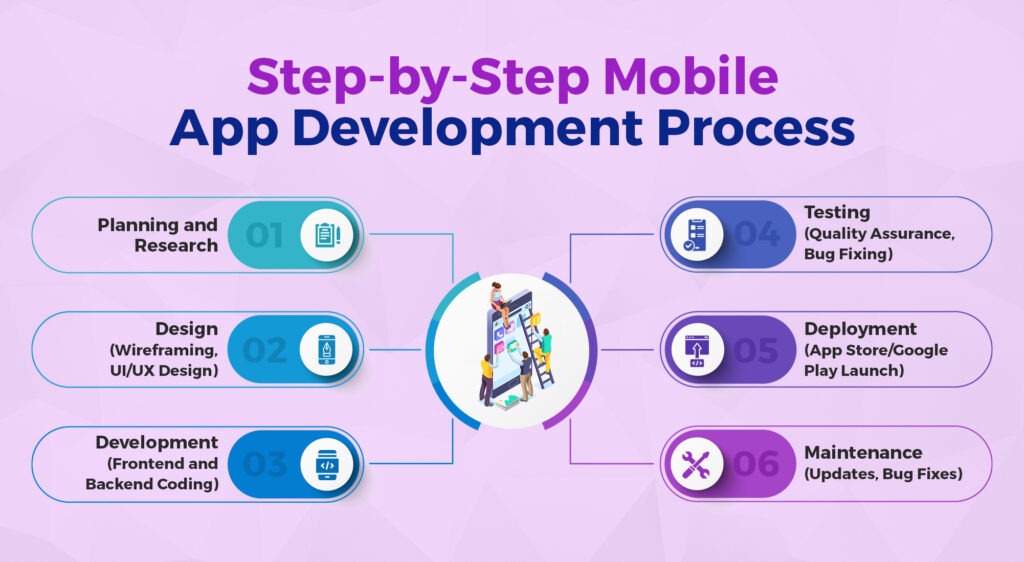
Planning and Research
The first step in mobile app development is thorough planning and research. This involves understanding your target audience, defining your app’s goals and objectives, and conducting market research to identify competitors and potential opportunities.
Key activities in this phase:
- Market analysis: Identify your target audience, their needs, and preferences.
- Competitive analysis: Research existing apps in your niche to understand their strengths and weaknesses.
- Feature prioritization: Determine the most essential features for your app and prioritize them based on user needs and business goals.
- Monetization strategy: Decide how you will generate revenue from your app (e.g., in-app purchases, advertisements, subscriptions).
| Activity | Estimated Time | Cost |
|---|---|---|
| Market analysis | 2-3 weeks | $1,000 – $3,000 |
| Competitive analysis | 1-2 weeks | $500 – $1,500 |
| Feature prioritization | 1-2 weeks | No direct cost |
| Monetization strategy | 1 week | No direct cost |
Design (Wireframing, UI/UX Design)
Once you have a clear understanding of your app’s goals, it’s time to focus on the design. This involves creating wireframes to visualize the app’s layout and user flow, and then designing the user interface (UI) and user experience (UX).
Key activities in this phase:
- Wireframing: Create low-fidelity mockups of the app’s screens and layout.
- UI/UX design: Develop a visually appealing and intuitive interface that is easy to use.
- User testing: Conduct usability testing to gather feedback and make necessary improvements.
| Activity | Estimated Time | Cost |
|---|---|---|
| Wireframing | 1-2 weeks | $2,000 – $5,000 |
| UI/UX design | 2-4 weeks | $5,000 – $10,000 |
| User testing | 1-2 weeks | $1,000 – $3,000 |
Mobile App Development (Frontend and Backend Coding)
The development phase involves writing the code that brings your app to life. This includes both frontend development (creating the user interface) and backend development (handling data storage, processing, and server-side logic).
Key activities in this phase:
- Frontend development: Build the app’s user interface using programming languages like HTML, CSS, and JavaScript.
- Backend development: Develop the server-side logic using languages like Java, Python, or Ruby.
- API integration: Integrate with third-party APIs if necessary (e.g., for payment processing, social media integration).
- Database management: Design and implement a database to store app data.
| Activity | Estimated Time | Cost |
|---|---|---|
| Frontend development | 4-8 weeks | $10,000 – $30,000 |
| Backend development | 4-8 weeks | $10,000 – $30,000 |
| API integration | 1-2 weeks | $2,000 – $5,000 |
| Database management | 1-2 weeks | $2,000 – $5,000 |
App Testing (Quality Assurance, Bug Fixing)
Thorough testing is essential to ensure your app functions correctly and provides a seamless user experience. This involves identifying and fixing bugs, ensuring compatibility across different devices and operating systems, and conducting user acceptance testing.
Key activities in this phase:
- Unit testing: Test individual components of the app.
- Integration testing: Test how different components work together.
- User acceptance testing: Test the app with real users to gather feedback and identify any issues.
| Activity | Estimated Time | Cost |
|---|---|---|
| Unit testing | 1-2 weeks | $2,000 – $5,000 |
| Integration testing | 1-2 weeks | $2,000 – $5,000 |
| User acceptance testing | 1-2 weeks | $1,000 – $3,000 |
Deployment (App Store/Google Play Launch)
Once your app is fully tested and ready to launch, you can submit it to the appropriate app store (App Store for iOS, Google Play for Android). This process involves following specific guidelines and providing necessary documentation.
Key activities in this phase:
- App store submission: Prepare your app for submission, including screenshots, descriptions, and pricing information.
- Review process: Wait for the app store to review and approve your submission.
- Launch: Once approved, your app will be available for download.
| Activity | Estimated Time | Cost |
|---|---|---|
| App store submission | 1-2 weeks | $99 (App Store), $25 (Google Play) |
| Review process | 1-2 weeks | No direct cost |
| Launch | 1-2 days | No direct cost |
App Maintenance (Updates, Bug Fixes)
After launch, it’s important to continue monitoring your app’s performance and addressing any issues that arise. This includes providing regular updates, fixing bugs, and responding to user feedback.
Key activities in this phase:
- Bug fixes: Address any reported bugs or issues.
- Updates: Release updates with new features, improvements, or security patches.
- User feedback: Monitor user reviews and feedback to identify areas for improvement.
By following this step-by-step process, you can successfully develop and launch your mobile app.
| Activity | Estimated Time | Cost |
|---|---|---|
| Bug fixes | Ongoing | $500 – $2,000 per bug |
| Feature updates | Varies | $5,000 – $20,000 per update |
| User feedback monitoring | Ongoing | No direct cost |
Crafting Your Ideal Mobile App/Experience Starts Here!
Ready to elevate your business? Your custom app is just a click away.
Yes Let’s goHow to Reduce Mobile App Development Costs? 7 Foolproof Tips!
Prioritize Features
Focus on the essential features that drive value for your users. Defer less critical features to future updates to save on initial development costs. Consider an MVP (Minimum Viable Product) approach to launch your app with core functionalities and iterate based on user feedback.
Choose the Right Development Team
Hiring a skilled and experienced development team is crucial for efficient and cost-effective development. Consider outsourcing to access a global talent pool and potentially lower costs. Evaluate the team’s experience, portfolio, and communication skills.
Leverage Pre-Built Components and Templates
Utilize pre-designed UI components and templates to speed up development and reduce costs. Integrate with third-party APIs for common functionalities like payments, maps, and social media integration. Choose suitable development frameworks like React Native or Flutter for cross-platform development, which can save time and costs.
Optimize Development Processes
Adopt agile development methodologies to break down the project into smaller iterations, allowing for flexibility and faster development. Implement continuous integration and continuous delivery (CI/CD) to automate testing and deployment, reducing manual effort and errors. Use version control systems to track changes and collaborate effectively.
Optimize Backend Infrastructure
Choose a suitable cloud platform like AWS, Azure, or Google Cloud to scale your app’s infrastructure as needed. Optimize database performance using indexing, caching, and query optimization techniques. Implement content delivery networks (CDNs) to distribute your app’s content across multiple servers and improve load times.
Test Thoroughly but Strategically
Prioritize testing of critical features and user flows. Automate testing using tools to reduce manual effort and speed up the process. Conduct user testing to gather feedback and identify potential issues.
Consider Outsourcing Non-Core Functions
If you don’t have in-house expertise, consider outsourcing design or development tasks. Partner with third-party vendors for specialized features like payment processing or analytics.
How Can AppVerticals Help You Reduce Mobile App Development Costs?
AppVerticals is committed to helping you achieve your app development goals while minimizing app development costs. Our team of experienced mobile app developers in UAE, US, and other regions offer a range of strategies to optimize your budget without compromising quality.
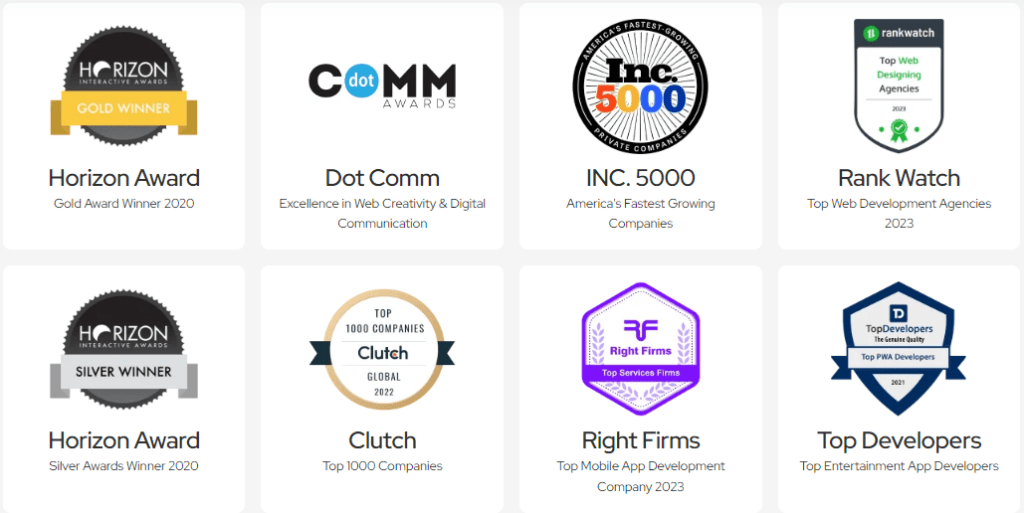
Here is what you can expect from us:
Tailored Solutions to Your Needs
We understand that every app project is unique. Our experts will work closely with you to identify the most cost-effective approach based on your specific requirements and goals. This ensures that you’re not paying for features you don’t need.
Efficient Development Processes
We employ efficient development methodologies and leverage the latest tools and technologies to streamline the development process. This helps reduce time-to-market and minimize costs.
Skilled and Experienced Team
Our team of experienced developers and designers has a proven track record of delivering high-quality apps within budget. Their expertise and efficiency can significantly reduce development costs.
Strategic Outsourcing
In some cases, outsourcing certain development tasks can be a cost-effective strategy. We can help you identify areas where outsourcing can provide value and reduce costs.
Prioritization of Features
We’ll work with you to prioritize essential features and consider deferring less critical ones to future updates. This helps focus development efforts on what matters most, saving time and money.
Leveraging Pre-Built Components
Utilizing pre-built components and libraries can accelerate development and reduce costs. Our team has expertise in selecting and implementing appropriate components to meet your project’s needs.
Continuous Optimization
We believe in ongoing optimization to ensure your app’s performance and efficiency. This includes regular updates, bug fixes, and performance enhancements. By proactively addressing these areas, we can help you reduce long-term costs.
Transparent Communication and Collaboration
Open communication and collaboration are essential for a successful project. We maintain transparency throughout the development process, keeping you informed and involved. This helps prevent misunderstandings and ensures that your project stays on track and within budget.
Read Also: Case Studies of AppVerticals
By partnering with AppVerticals, you can benefit from our expertise, efficiency, and commitment to cost optimization. Let’s work together to bring your app vision to life!
FAQs – Mobile App Development Costs
How much does it cost to make an app?
The cost of developing an app can vary widely depending on several factors. There’s no one-size-fits-all answer, as the price can range from a few thousand dollars to hundreds of thousands. A basic app may cost $10,000 – $50,000, a medium-complexity app may cost $50,000 – $120,000, and a complex app may cost $100,000 – $300,000.
How much does it cost to maintain an app?
The cost of maintaining an app can range from $5,000 to $20,000 per month on average. However, this can vary significantly depending on the app’s complexity, features, and the frequency of updates.
How long does it take to build an app?
The development timeline for an app can range from 2-3 months to 6-12 months or more, depending on its complexity and the development team’s size and experience.
What are the factors that affect the overall app development costs?
Several factors can influence the overall cost of app development, including mobile app design complexity, number of features, platform choice, app development time, backend infrastructure, third-party integrations, and maintenance & updates.

